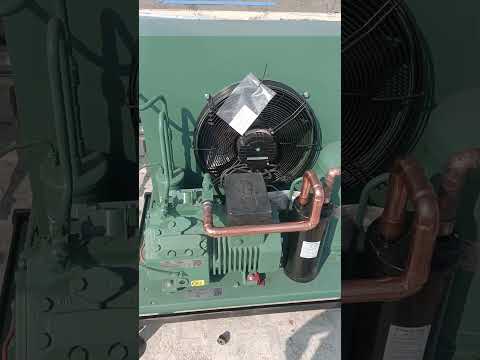Introduction
When it involves house devices, a lot of us rely upon them every day. From the fridge that keeps our food fresh to the washing equipment that makes our washing day a wind, these makers play an essential role in our daily lives. Nonetheless, much like any kind of mechanical tool, they can run into problems from time to time. Recognizing how to troubleshoot common appliance troubles can save you time, cash, and the inconvenience of dealing with repair service experts. In this guide, we will certainly discover different appliances and their common issues, supplying thorough troubleshooting approaches you can use at home.
The Ultimate Overview to Troubleshooting Common Home Appliance Issues
Understanding Your Home appliances: Why Upkeep Matters
Every home appliance is made with details features in mind, and while they might appear robust, proper maintenance is vital for durability. Routine upkeep not only boosts performance however additionally prevents minor concerns from intensifying right into expensive repair services.
Key Advantages of Home appliance Upkeep:
- Increased Life-span: Much like your vehicle needs regular oil adjustments, devices benefit from regular care. Energy Performance: Well-kept home appliances consume less energy, saving you money on utility bills. Safety Guarantee: Some device malfunctions can pose safety and security risks; routine checks reduce risks.
Common Device Issues: An Overview
Before diving right into troubleshooting techniques, let's have a look at some common issues related to numerous house home appliances:

Each appliance repair of these troubles has its very own collection of causes and services which we'll discover extensive.
Refrigerator Not Cooling? Right here's What You Can Do
Causes of Refrigeration Failure
A fridge that fails to cool correctly can be due to a number of elements:
- Blocked vents restricting airflow Dirty condenser coils affecting efficiency Faulty temperature level settings
Troubleshooting Steps
Check the Temperature level Settings:- Ensure the thermostat is established correctly (usually in between 37 ° F and 40 ° F). If it's too high or also reduced, adjust accordingly.
- Located at the back or underneath the fridge; clean any kind of dirt or debris using a vacuum or brush. Dirty coils can trigger overheating and bad air conditioning performance.
- Check for splits or dust on door seals. Clean them with cozy soapy water; if damaged, change them.
- Strange sounds can indicate a trouble with the compressor or fan motor. If you listen to uncommon seem like buzzing or clicking, additional inspection may be needed.
- If there's ice build-up in the freezer compartment, your defrost system may be malfunctioning. Manually defrost and inspect elements like the defrost timer and heater.
Washing Equipment Won't Spin? Troubleshoot This Issue!
Reasons for Spin Failure
When your cleaning maker air cooler repair declines to rotate effectively, numerous wrongdoers might be entailed:
- Unbalanced loads Clogged drainpipe pump filter Faulty cover switch
How to Detect and Repair Rotate Problems
Redistribute Laundry Load:- Uneven lots can create inequality; rearrange garments evenly around the drum.
- Locate the filter (normally at the front bottom) and clean out any type of lint or particles blocking it.
- Open and close the cover; if there's no click noise when closing it could require replacement.
- A worn-out drive belt may slip throughout operation; look for wear and replace if necessary.
- If nothing else works, seek advice from a professional as control panel concerns can need innovative troubleshooting.
# FAQs Concerning Appliance Troubleshooting
Q1: Just how do I understand if my device issue calls for expert help?
A1: If you've attempted fundamental repairing steps without success or if you notice indicators of electric damage (like stimulates), it's ideal to speak with an expert technician.
Q2: Can I execute all fixings myself?

Q3: What tools do I need for fundamental home appliance repair?
A3: Standard devices include screwdrivers (flathead and Phillips), pliers, a multimeter (for electrical testing), and cleaning materials like brushes/cloths.
Q4: Just how often should I keep my appliances?
A4: A good general rule is to do upkeep checks every 6 months; however, high-use items like fridges may need more regular attention.
Q5: Are older home appliances worth repairing?
A5: It depends upon their age and condition versus substitute expenses; normally if fixing costs surpass half the cost of a brand-new device, substitute is recommended.
Q6: What are some signs that a device requires changing rather than repairing?
A6: Watch out for consistent malfunctions despite repair work, substantial energy inefficiency causing high expenses, or noticeable damages that impacts functionality.
Conclusion
In verdict, having a strong understanding of how to troubleshoot typical home appliance problems can not only save you time but additionally money in prospective fixing prices down the line. Whether it's your refrigerator falling short to cool down or your cleaning maker refusing to rotate effectively; recognizing what steps to take very first makes all the distinction. Bear in mind that while some troubles are easily fixable in the house via basic troubleshooting strategies-- others may need professional intervention for safety and security reasons.
Utilizing this overview as a source will equip you as a house owner by furnishing you with understanding about your devices' inner functions-- allowing you to keep them efficiently while lessening unwanted surprises!
By adhering to these standards laid out in "The Ultimate Guide to Troubleshooting Common Device Issues," you'll find yourself much better planned for whatever challenges your home devices toss at you! So roll up those sleeves-- your useful skills await!
